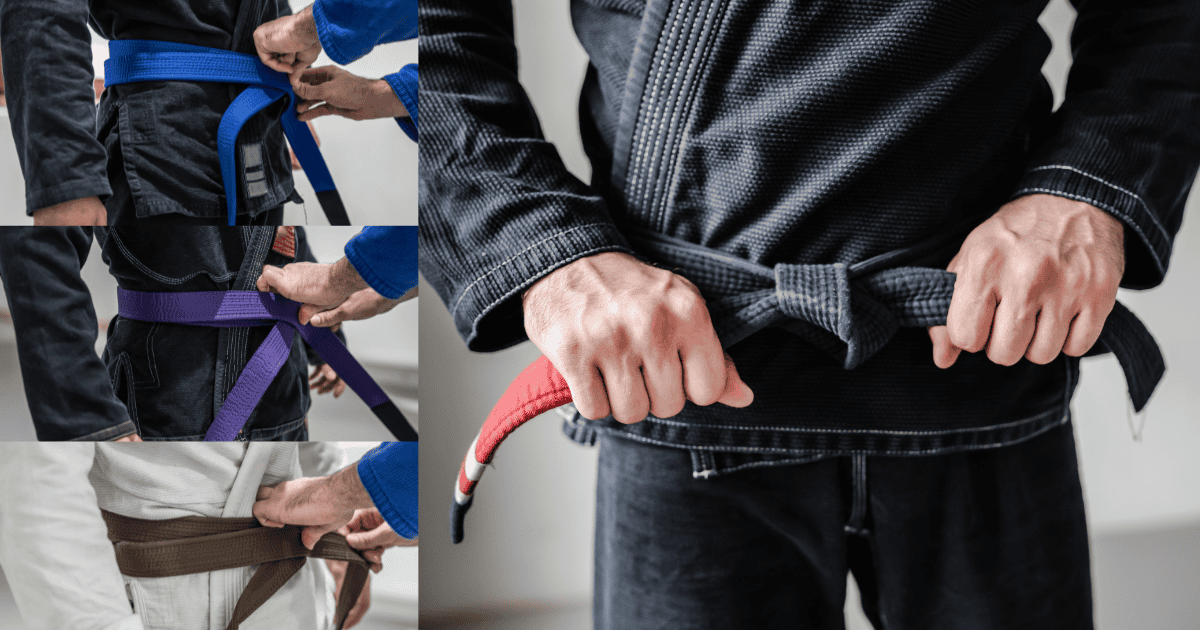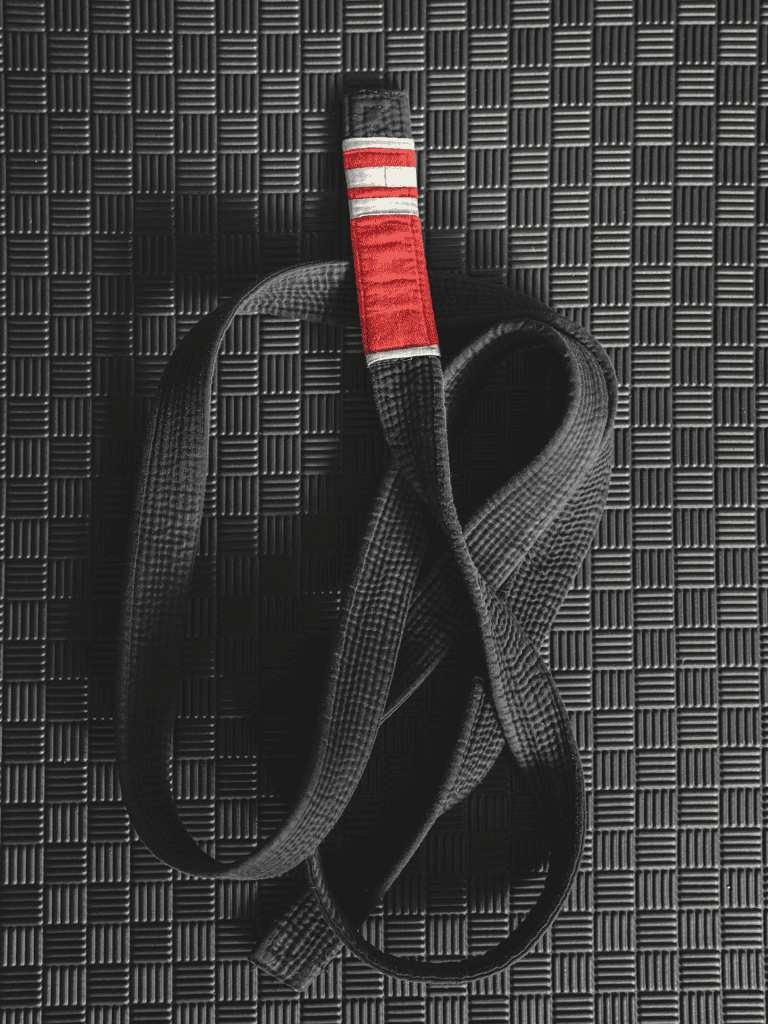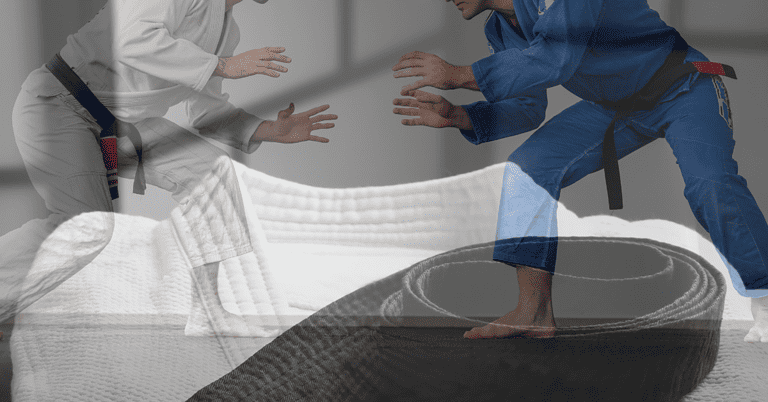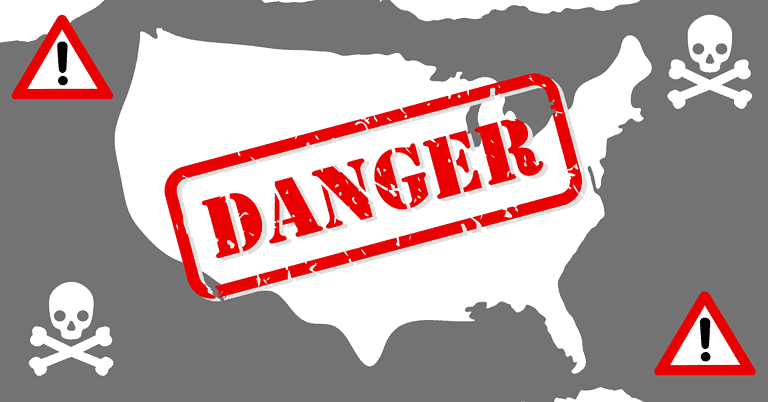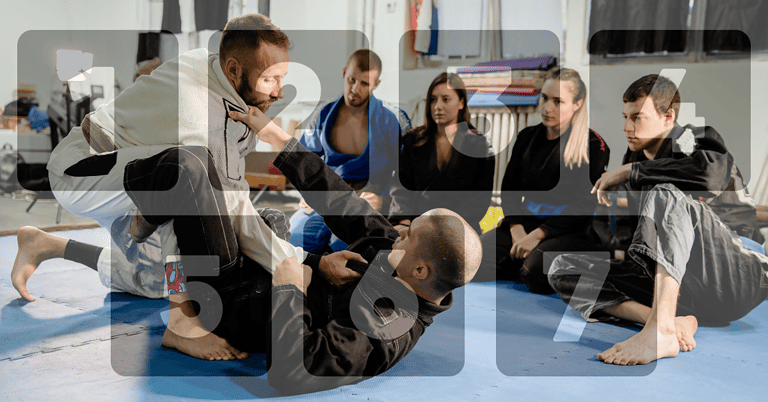BJJ Belt Guide
When people talk about martial arts, one of the first things that comes to mind is the belt. In fact, tell someone you’re a martial artist and the first question you might get is “What belt are you?” And while most people won’t understand the belt colors and ranking system of any particular martial art, almost everyone has some idea of what it means to be a black belt.
But are all martial arts and their associated belts created equal? What is the Brazilian Jiu-Jitsu belt system? What does it mean to be a Jiu-Jitsu black belt? What are the physical characteristics of a BJJ belt? Is a belt some mystical symbol of martial arts mastery? Or is it just something that holds your pants up or your jacket together? Let’s find out!
BJJ Belt Guide
Why are BJJ belts so coveted?
When it comes to martial arts belts, nothing is more coveted than a black belt in Brazilian Jiu-Jitsu. But why is that the case?
Simply put, a black belt in BJJ is really freakin’ hard to get! It takes years and years of dedication and training… probably about 10 years on average (but it really comes down to time on the mat rather than time on the calendar). There aren’t really any shortcuts to a BJJ black belt, and because of the validation and testing of skills that regularly occurs in competition and in the sparring that takes place in BJJ class, there is confidence that the belt truly reflects the skill level of the practitioner and that the belt was earned. In other words, there’s little concern of a “McDojo” situation when talking about a BJJ black belt. You can’t just sign up for classes at your local BJJ academy and then a couple of years later have a black belt. You won’t see elementary school kids with a BJJ black belt. In fact, according to the belt guidelines of the International Brazilian Jiu-Jitsu Federation, a BJJ practitioner isn’t even eligible to receive a black belt until reaching the age of 19 years old.
Another thing worth noting is that the rise of Mixed Martials Arts (and of the UFC in particular) has established BJJ as a highly effective martial art (arguably the most effective single martial art). So when you achieve a black belt in BJJ, you’re achieving a black belt that is perceived to have been (and has been) earned through years of dedicated training and that represents a high level of skill in a martial art that has been proven to work.
BJJ Belt System for Adults
The BJJ adult belt system is pretty straightforward with only 5 practical levels or colored belts. Everyone starts out at white belt and from there advancement goes (in order) to blue belt, purple belt, brown belt, and black belt. Because there are so few belts and because it can take many years to achieve a BJJ black belt, you can expect to spend quite a bit of time at each belt color.
Looking at my own personal experience… I spent almost a year and a half at white belt, about 2 years at blue belt, about 4 years at purple belt, and about 5 years at brown belt before finally achieving the rank of black belt. So that’s a journey of about 12 years from white belt to black belt.
For each belt color, most schools will offer the opportunity to earn up to 4 stripes or degrees that represent a student’s achievement or progress within that belt rank. So if you ask a BJJ practitioner what his or her rank is, you might get a response like “3 stripe blue belt” or “2 stripe brown belt”. While stripes provide a more fine-tuned outward representation of a student’s actual skill level and time spent at a certain belt rank (beyond just looking at how faded and worn the belt might be), they can also serve as a source of motivation and distinction for students as they progress through each belt rank. This is important when you’re looking at potentially spending multiple years at a particular belt color. The stripes give you a goal to shoot for along the way and also a way to show that if you’re a 2 stripe purple belt who got his purple belt over a year ago that you outrank another purple belt who has no stripes and just got his purple belt yesterday.
I mentioned before that there are only 5 “practical levels” of BJJ belts, and I said this because for many BJJ students black belt is the highest level they will realistically be able to achieve. That said there are actually 3 belt levels above black belt: red and black belt (or “coral belt”), red and white belt, and finally red belt. The reason why these upper belt levels won’t be achievable for many BJJ practitioners is simply because of time.
Once you reach black belt, earning additional degrees is based on time with each degree earned requiring a minimum number of years. To get the first degree on your black belt, you must be a black belt for a minimum of 3 years. The same applies in going from your first degree to your second degree and from your second degree to your third degree. But then going from your third degree to your fourth degree requires a minimum of 5 years as does going from your fourth degree to your fifth degree and from your fifth degree to your sixth degree. After that, going from sixth degree to seventh degree (which is represented by the red and black / coral belt) requires a minimum of 7 years. So, in order to achieve the rank of red and black belt, you will need to have been a black belt for a minimum of 31 years. Moving on to eighth degree (which is represented by the red and white belt) requires another 7 years (38 years total as a black belt), and moving on to ninth degree (which is represented by the red belt) requires another 10 years… bringing the grand total to 48 years as a black belt to reach red belt. And let’s say you took 10 years of training to go from white belt to black belt… that would make your path from white belt to red belt a journey of 58 years.
Many (or most) people simply won’t be able to put in the roughly 58 years required to reach red belt or even the roughly 41 years required to reach red & black belt. This might be a realistic option for people who start BJJ when they’re pretty young and achieve a black belt at a relatively early age, but for those of us who find/found BJJ a bit later in life the odds aren’t exactly in our favor.
BJJ Belt System for Kids
According to the IBJJF guidelines, every adult belt has a minimum age requirement. For blue and for purple that minimum is 16 years old. For brown, it’s 18 years old. And as previously noted, the minimum age for black belt is 19 years old. So what about belts for kids who are under 16 years old? That’s where kids’ ranks come into play.
Just like any adult BJJ practitioner, kids start their BJJ journey as a white belt. But for kids, four colored belts are inserted between white belt and the blue belt they’ll become eligible for at 16 years of age. Those main belt colors (in order) are grey, yellow (age 7 minimum), orange (age 10 minimum), and green (age 13 minimum). But for each of these main belt colors, there is a belt of that color with a white stripe running through the middle that comes before it (on the “white belt facing side”) and a belt of that color with a black stripe running through the middle that comes after it (on the “black belt facing side”). So for a student advancing from white belt… before achieving a solid grey belt he would get a grey belt with a white stripe, and his next belt after the solid grey belt would be the grey belt with a black stripe before moving on to the yellow belt with a white stripe (and so on).
Furthermore, kids can also earn stripes / degrees on their belts. So with 13 different belts and the opportunity to earn multiple degrees on each belt, there is lots of opportunity for kids to see and feel their progression and stay motivated to achieve the next goal and next rank along the way.
These days kids are finding their way into BJJ at a very young age and becoming experienced practitioners long before reaching adulthood. So if you’re in an adult class and you see a kid taking part in the class who’s a 4 stripe green belt, you should be careful. That kid may be 15 years old. He may have been training BJJ every day since he was 5. He may be an athletic, high level competitor or even a champion in the kids division. He may have the skill level of an adult brown belt or even an adult black belt… he’s just not old enough yet to receive such an adult rank. You’ve been warned. 🙂
IBJJF Ranking Chart
Below is a nice poster from the IBJJF that clearly displays and summarizes everything I outlined above regarding the different belt levels for kids and adults, the degrees, and the minimum age requirements. You can also find this info on the IBJJF’s “Graduation System” page.
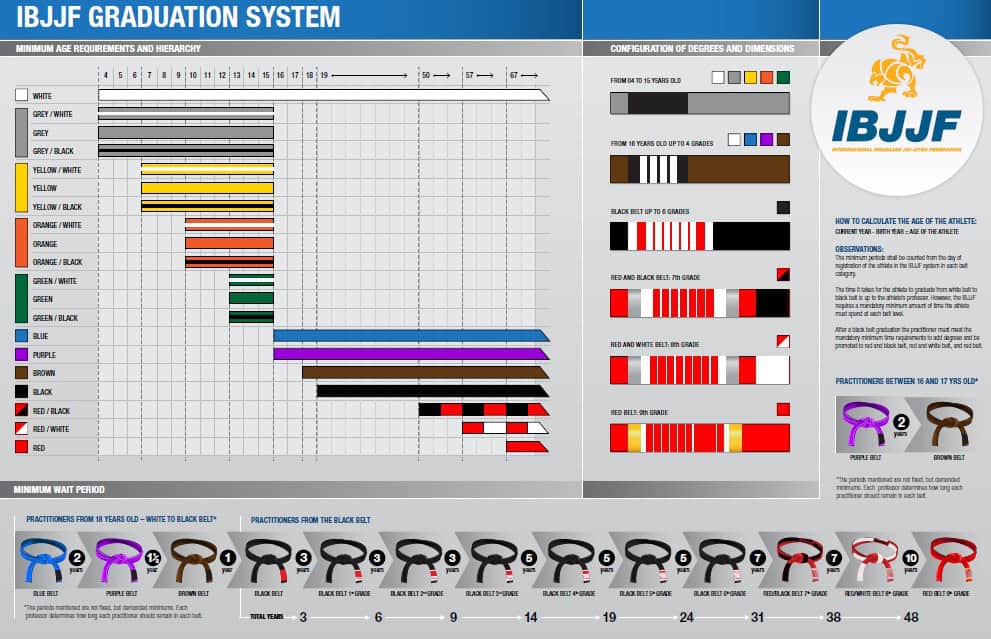
Do you need a “fancy” BJJ belt?
Now that we’ve talked about how the BJJ belt rankings / colors work, let’s talk about what kinds of belts are available. Some people give very little thought to their belt beyond what color it is and whether or not they can tie it around their waist. As previously mentioned, they just view the belt as a piece of material to hold their pants up or keep their jacket closed. But other people give a lot of thought to their belt… how it’s constructed, the materials used, its dimensions (length, width, thickness), etc. I used to be in the former category, but these days I’m very much in the latter.
Like any product or piece of clothing, different brands of belts have different levels of quality. You can buy a cheap pair of shoes or you can buy an expensive pair of shoes. At the basic level, either will do the job of being a pair of shoes. But it’s almost certain (though not guaranteed) that the more expensive pair of shoes will be of higher quality, will use better materials, will have better longevity, and so on. The same holds true for BJJ belts. And as is the case with shoes, these days you can also throw in the factor of having belts serve as status symbols or fashion accessories based on their brand. I’ll call these higher cost, higher end belts “fancy belts”.
Answering the question of whether or not you need a fancy belt is easy. The answer to that question is no. Just as a cheap, basic pair of shoes will do the job of being a pair of shoes… a cheap, basic BJJ belt will do the job of being a BJJ belt. So what we’re really talking about is a purely subjective matter of preference. The classic difference between “want” and “need”.
So let’s say you’ve decided that you want a fancy belt. Before you start shopping and make a purchase, make sure that buying a new belt for yourself is going to be ok with your BJJ school and instructor. As I mentioned in my “How to Start BJJ” article, some schools might require (or strongly encourage) you to purchase a school-branded uniform or other equipment, so you really need to take into consideration what your school allows.
Even if there isn’t an official policy regarding belts, some instructors might be offended if you go out and purchase a new belt to replace the one they gave you. I saw this happen with a fellow student back in the day when our instructor presented him with his blue belt. Shortly thereafter that student bought a new “fancy belt” for himself to replace the belt he was originally given. I must say… the new fancy belt was quite nice. But our instructor didn’t see it that way. Instead, he was offended by this… as if the student was saying that the physical belt our instructor presented to him wasn’t good enough. I don’t think this would be that big of a deal these days unless you’re at a school that requires you to have school-branded equipment, but it’s still worth checking out before you go purchase a new belt and ruffle any feathers.
This idea of getting a “fancy belt” really doesn’t come into play until you reach blue belt. Most white belt students will simply use whatever belt came with their beginner gi. For me, I used the belt that was given to me by my instructor for my white, blue, and purple belts. In retrospect, my white belt and my blue belt were both of pretty decent quality. No complaints. My purple belt, on the other hand, was more of what I would consider a budget belt. Serviceable, but not of great quality. Still, I wore that belt for all of my years as a purple belt and never considered replacing it.
It wasn’t until brown belt that I thought I might want a fancy belt. By that time I was certainly well aware of the fact that there were different types of belts out there. It had also become common for students to buy more expensive, fancy gis (and multiples at that). So I thought, if you’re willing to invest money in premium gis, why wouldn’t you invest money in a premium belt… the one piece of the BJJ uniform that you’re guaranteed to wear to every single class over what could be a period of a few years? So at brown belt I decided to invest in a premium belt, which proved to be a good choice because I ended up being a brown belt for 5 years!
I wanted a belt that was on the thicker side. Something that felt rugged and substantial. I wanted the length to be just right, not too long and certainly not too short. I ultimately decided on the “Deluxe” BJJ belt from Kataaro and customized it to my liking. I ended up being very happy with that decision… so much so that when I finally earned my black belt I once again went to Kataaro and it’s the belt I wear to this day.
So do you “need” a fancy belt? No, not really. But as long as it’s ok with your school / instructor, I see nothing wrong with wanting and getting a fancy belt. 🙂
Material & Construction
The vast majority of BJJ belts are going to be made of cotton, which could be twill, canvas, or even ripstop fabric. That said, some belts do blend cotton with other materials like polyester, satin, or hemp.
Another consideration in terms of the belt’s construction is where it’s made. For example, if you live in the United States you might be comparing the difference between a custom belt that’s handmade in the USA and a mass-produced belt made somewhere else.
Beyond the belt’s basics measurements (length, width, thickness), a few other things to consider include:
- What is the belt’s core made of?
- How stiff is the belt?
- How many rows of stitching does the belt have?
- Does the belt’s stitching run through the rank sleeve or is the rank sleeve simply wrapped around the belt and tacked on?
- Is embroidery available?
Whether or not any of this is important will be a matter of personal preference. But if you intend to go down the fancy belt rabbit hole, keep these things in mind.
Sizing & Fit
The sizing for most BJJ belts follows the same “A” system that BJJ gis follow (i.e. A1, A2, A3, etc.) So if you wear a size A3 gi, there’s a decent chance that A3 is the right size belt for you too. But everyone has their own taste and everyone is built differently. So to find the right belt size for you, you might consider the following:
- How tightly do you cinch your belt?
- Where do you like to have your belt sit on your waist?
- How long do you like the ends / tails of your belt to be after your belt is tied?
- Do you intend to wash your belt? (washing your belt is a topic for another day, but if you do wash your belt it will likely shrink)
Again, we’re firmly in the subjective realm of personal preference here. One thing you can do (and what I did before ordering my first Kataaro belt), is take your existing belt, put it on in front of a mirror, and note what you like and don’t like about it. Maybe you wish it was a little longer; maybe you wish it was a little wider; etc. Measure your belt, add on the additional length, width, etc. that you wish it had, and use those numbers to order your new belt. That way you’re not just guessing. You’re using exact measurements to order a belt that’s custom fit to your personal taste.
Brands
Unless you’re required by your BJJ school to wear a school-branded belt, you’ll have a number of different BJJ belt brands to choose from. Almost every brand that offers BJJ gis also offers BJJ belts. And generally speaking, the level or quality of the belt will match the brand’s level or quality with respect to BJJ gis. So, for example, a brand that’s known for offering budget-level gis will also offer budget-level belts and a brand that’s known for offering premium-level gis will also offer premium-level belts.
You might also have a specific brand preference or brand loyalty that influences the belt you get. For example, if you’re a fan of Shoyoroll and only buy Shoyoroll gis, then there’s a good chance that you will end up buying (and will be happy with) a Shoyoroll belt.
Outside of brands that are primarily known for making BJJ gis but also offer BJJ belts, there are brands that are known more for making martial arts belts. The maker of my belt, Kataaro, falls in this category. Another great example that I’ve seen is Eosin Panther.
Cost
Cost for a new BJJ belt will vary depending on the type of belt you get (e.g. budget vs. premium, mass-produced vs. custom, brand, etc.)
Your new belt might even be free if you got it as part of a belt promotion, your school provided it for no additional charge, and you’re happy with it and don’t feel like you need another belt.
But leaving the “free” belt option aside, BJJ belts will generally range around $15 – $20 USD for a basic, budget, mass-produced belt and more around $75 – $100 USD for a high-quality, handmade, custom belt with embroidery. There are a number of options in between like “premium” belts that use higher quality materials but are still mass produced and are not custom or handmade. These will likely fall somewhere in the $40 – $60 USD range.
Conclusion
Hopefully you now have a clear understanding of how the BJJ belt ranking system works, why BJJ belts are so highly regarded, and what you might want to consider if you’re going to purchase a new BJJ belt (“fancy” or otherwise).
Like most things in life, your attitude toward your BJJ belt (both in terms of what it represents and its physical characteristics) will be highly subjective. It all comes down to personal preference.
For me, I’m incredibly proud of my BJJ black belt. It represents years and years of dedication, training, and perseverance.. There were so many times along the way that I could have quit because of injuries or just because of “life” getting in the way of my training. And the truth is, a lot of people (most people) do quit along the way and never make it to black belt. It takes a very long time, and it’s not easy. But it is incredibly rewarding, which is why you see so many tear-filled speeches when people receive their BJJ black belt.
For something that means so much, I have no issue with spending a bit extra for a “fancy” premium belt (even at the lower belt levels). Maybe a belt is just something to hold your pants up or keep your jacket closed, but when it comes to BJJ… it’s what it represents that matters.

